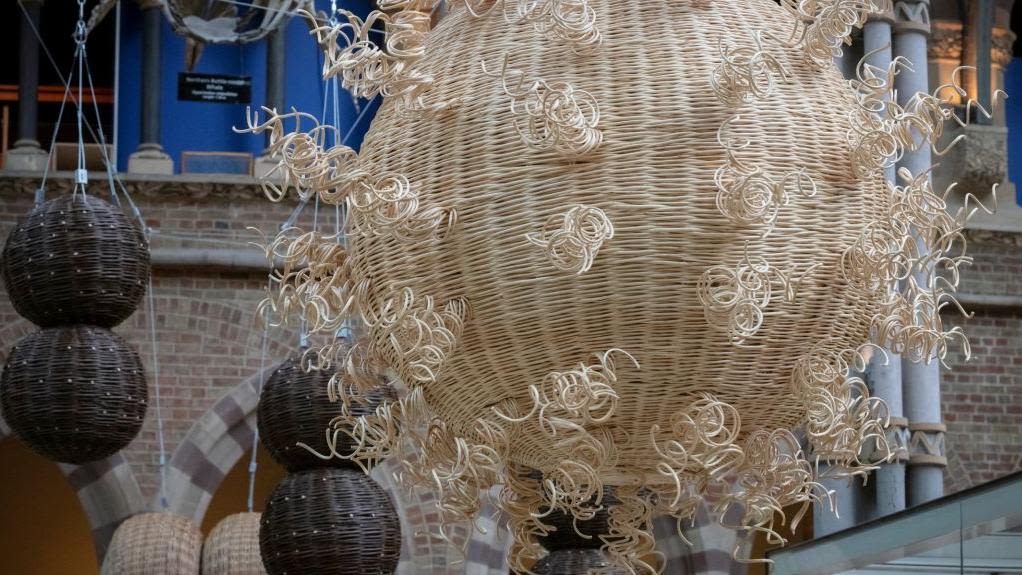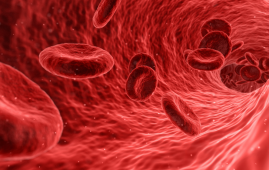

The installation was commissioned to mark the 30th anniversary of the Oxford Vaccine Group which was established in 1994, and set out to provide scientific research into the development and implementation of vaccines, in particular diseases for which there were at the time no effective vaccines.
The installation consists of six, three-dimensional sculptures woven in English willow, representing different diseases for which OVG has developed a vaccine: pneumonia, meningitis, typhoid, Covid, malaria and Ebola. Five of these will be suspended in the central room of the Museum, within the How Evolution Works gallery, with the sixth – a 2.4m long representation of Ebola weighing 75kg – lying at floor level.
‘For 30 years, OVG has been working at the forefront of vaccine research in the fight against these diseases and many others, saving millions of lives, and helping people of all ages live longer, happier and healthier lives,’ says Professor Pollard, Director of the Oxford Vaccine Group, ‘and it is really exciting to see Angela bring this to life in her artwork.’
more recommended stories
 Fat-Regulating Enzyme Offers New Target for Obesity
Fat-Regulating Enzyme Offers New Target for ObesityKey Highlights (Quick Summary) Researchers identified.
 Spatial Computing Explains How Brain Organizes Cognition
Spatial Computing Explains How Brain Organizes CognitionKey Takeaways (Quick Summary) MIT researchers.
 Gestational Diabetes Risk Identified by Blood Metabolites
Gestational Diabetes Risk Identified by Blood MetabolitesKey Takeaways (Quick Summary for Clinicians).
 Phage Therapy Study Reveals RNA-Based Infection Control
Phage Therapy Study Reveals RNA-Based Infection ControlKey Takeaways (Quick Summary) Researchers uncovered.
 Pelvic Floor Disorders: Treatable Yet Often Ignored
Pelvic Floor Disorders: Treatable Yet Often IgnoredKey Takeaways (Quick Summary) Pelvic floor.
 Urine-Based microRNA Aging Clock Predicts Biological Age
Urine-Based microRNA Aging Clock Predicts Biological AgeKey Takeaways (Quick Summary) Researchers developed.
 Circadian Control of Neutrophils in Myocardial Infarction
Circadian Control of Neutrophils in Myocardial InfarctionKey Takeaways for HCPs Neutrophil activity.
 E-Cigarette Use and Heart Attack Risk in Former Smokers
E-Cigarette Use and Heart Attack Risk in Former SmokersKey Takeaways for Clinicians and Nurses.
 36-Week Pre-eclampsia Screening May Reduce Term Risk
36-Week Pre-eclampsia Screening May Reduce Term RiskA New Preventive Strategy for Term.
 Cardiovascular Risk and Sudden Cardiac Death in Diabetes
Cardiovascular Risk and Sudden Cardiac Death in DiabetesRising Sudden Cardiac Death (SCD) Risk.

Leave a Comment